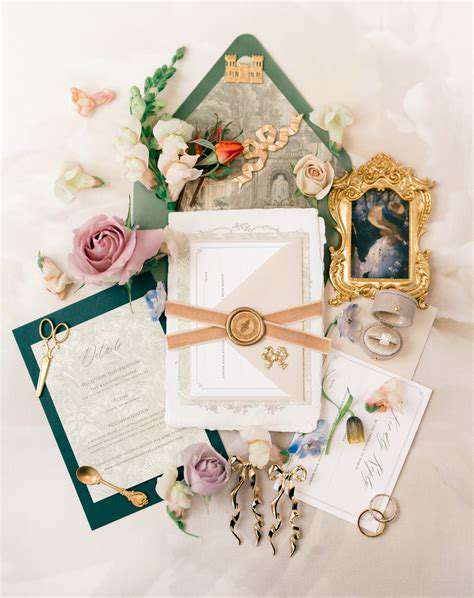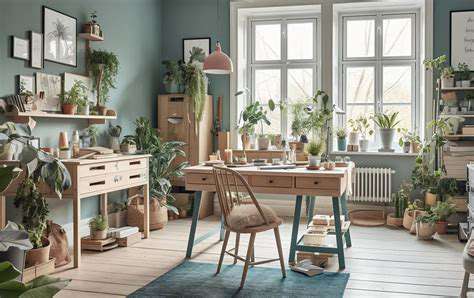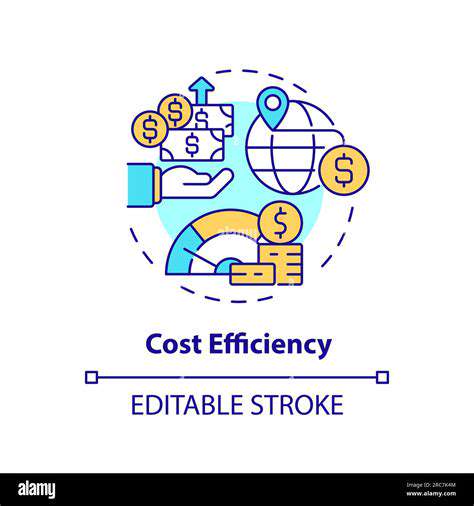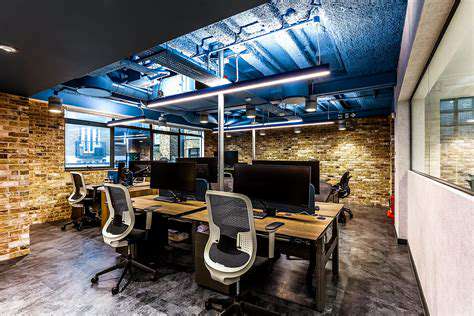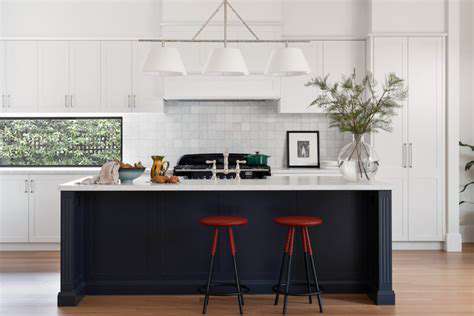How to Plan a Functional Space with Full Package Home Design
Understanding Your Lifestyle
One of the most overlooked yet critical aspects of space design is aligning it with your daily rhythms. Your home should reflect how you actually live, not just how you imagine living. Take stock of your routines—morning coffee rituals, work-from-home habits, or evening relaxation patterns. Do you frequently host game nights? Need a quiet corner for meditation? These nuances shape a space that works for you, not against you.
Consider this: remote workers often underestimate their need for physical separation between work and leisure zones. A fold-out desk in the bedroom might seem space-efficient, but it can blur boundaries and reduce sleep quality. Meanwhile, parents of toddlers might prioritize open sightlines over aesthetic room dividers.
Identifying Space Requirements
Grab a tape measure—this step separates dreamers from doers. Document every dimension, including ceiling heights, outlet locations, and natural light angles. That perfect reading nook won't work if the only sunny spot fits a chair but not the accompanying bookshelf. Pay special attention to architectural quirks: that oddly placed column could become a design feature rather than an obstacle.
Try this exercise: walk through each room at different times of day. Notice how sunlight shifts across floors, or how evening shadows change a room's feel. These observations reveal opportunities—like placing a workspace where morning light energizes you, or positioning a TV to avoid glare.
Visualizing Your Ideal Space
Here's where Pinterest fails most people—they collect pretty images without analyzing why they appeal. Create a functionality mood board alongside your aesthetic one. Pin that sleek floating desk, but also note the ergonomic chair tucked beneath it. Love those open shelves? Consider whether you'll actually maintain their magazine-ready neatness.
Pro tip: Use painter's tape to map furniture layouts on floors and walls. This physical mockup reveals circulation paths you'd miss in digital planning. That gorgeous sectional might leave no walking room to the balcony, while two smaller sofas could solve the problem.
Prioritizing Functionality Over Aesthetics
Let's be honest—that glass coffee table looks stunning in showrooms but shows every fingerprint in real life. Every design choice should pass the Tuesday night test: Will this work when you're tired, rushed, or hosting messy kids? Opt for performance fabrics that resist stains, rugs with enough pile to cushion falls, and surfaces that clean easily.
Flow matters more than most realize. Test pathways with a full laundry basket—can you navigate comfortably? Ensure frequently used items live where you naturally reach for them, not where they look best. That beautiful fruit bowl belongs on the counter you pass when entering the kitchen, not the display shelf.
Incorporating Storage Solutions
Forget generic decluttering advice—smart storage anticipates how items are actually used. Shoes worn daily need different storage than seasonal boots. Designate landing zones near entries for keys and bags. In kids' rooms, place toy bins at child-height where play naturally happens.
Consider invisible organization: drawer dividers for utensils, under-bed storage for linens, or a pull-out trash bin in the kitchen island. The best systems don't just hide clutter—they make putting things away easier than leaving them out.
Budgeting and Planning
Budget in thirds: allocate 60% for essentials (like a quality mattress), 30% for important upgrades (task lighting), and 10% for last-minute adjustments. Always keep a contingency fund—that perfect rug might need a $200 pad you didn't anticipate.
Phase your project: tackle structural changes first (lighting, flooring), then install built-ins, and finally add movable furniture. This prevents costly re-dos when you realize the sofa won't fit through the door after painting.

Choosing the Right Furniture and Fixtures for Your Lifestyle
Understanding Your Lifestyle Needs
Furniture should adapt to your life, not the other way around. Conduct a furniture audit of your current pieces: Which items do you actually use daily? Which collect dust? That formal dining set used twice a year might be replaced with an expandable table that serves as your everyday workspace.
Think in activity zones rather than rooms: a cozy corner might combine a reading chair, side table, and lamp near a window, while the entertaining zone needs movable seating that can shift from conversation clusters to TV viewing.
Prioritizing Functionality and Aesthetics
The sweet spot lies in practical beauty. That stunning velvet sofa? Check if the fabric grade can withstand pets. Those trendy transparent chairs? Consider whether you'll constantly worry about visible fingerprints. Look for pieces with hidden functionality—ottomans with storage, beds with built-in USB ports, or coffee tables that lift for dining.
Test before you buy: spend 15 minutes sitting in that office chair, lie down on the sofa, open and close drawers. Quality reveals itself in details—dovetail joints, smoothly gliding hardware, and substantial weight that prevents tipping.
Budgeting for Furniture and Fixtures
Adopt the cost per use mindset: A $2,000 sofa used daily for 10 years costs about $0.55 per day—cheaper than a $800 sofa replaced every two years. Splurge on items bearing weight or frequent use (mattresses, dining chairs), but save on trend-driven decor.
Time your purchases: floor models often sell at 30-50% off when new collections arrive. Many retailers discount in January (post-holiday) and July (mid-year clearance). Consider gently used high-end pieces from reputable resellers.
Choosing the Right Materials and Styles
Material choices should reflect real-life use. Performance fabrics like Crypton resist stains better than traditional options. Solid wood withstands refinishing, while veneers may not. In humid climates, moisture-resistant materials like teak outperform others.
Mix styles intentionally: pair a modern sofa with vintage lamps for depth. Stick to three main materials repeated throughout for cohesion—maybe walnut wood, brushed brass, and linen textures. This creates harmony without matchy-matchy perfection.
Incorporating Lighting and Accessories
Lighting should serve specific purposes: 40-50 lumens/sq ft for task areas, 20-30 for ambient lighting. Layer sources—overhead for general light, sconces for atmosphere, task lamps for focused work. Smart bulbs let you adjust color temperature from energizing cool white to relaxing warm glow.
Accessories should earn their place. That decorative bowl? Use it to corral daily essentials. Those throw pillows? Choose removable covers for easy washing. Every object should either be functional, deeply meaningful, or both.
Measuring and Planning Your Space
Follow the 18-inch rule: Maintain at least 18 between coffee tables and sofas for legroom, 36 for main walkways. For dining areas, allow 24 per place setting and 36-44 behind chairs for passage.
Create a digital twin using free room planner apps. Input exact dimensions, then test furniture arrangements virtually before purchasing. Many retailers offer augmented reality previews—see how that armchair actually looks in your living room.
Group fitness activities transform exercise from solitary chore to social engagement. The shared experience creates accountability—you're less likely to skip when others expect you. Instructors often modify movements for different abilities, allowing everyone to participate at their comfort level while still feeling part of the group dynamic.
Implementing the Design: Bringing Your Vision to Life
Conceptualizing the Space
Think in 3D, not just floor plans. How will that tall bookcase affect sightlines? Will open shelving make the room feel cluttered? Use blue painter's tape to mark furniture footprints on floors and walls—this reveals spatial relationships no app can match.
Consider design moments—intentional views created as you move through the space. That framed artwork visible from the entryway, or the way sunlight hits a plant at certain hours. These thoughtful details elevate a functional space to an experiential one.
Defining Functional Zones
Assign zones by activity frequency: daily-use areas need prime real estate, while occasional-use spaces can occupy less convenient spots. Create activity triangles in kitchens (fridge-stove-sink) and offices (desk-file storage-supplies). Keep these paths clear of obstructions.
Use rugs to visually define zones without walls. A large area rug anchors living room seating, while a smaller one marks a reading nook. Ensure all furniture legs either fully sit on or completely off the rug—partial placement looks awkward.
Material Selection & Budget
Sample materials in your actual space at different times of day. That warm gray tile might look cold under morning light. Order large swatches of fabrics and paints to see true colors. Test floor samples by placing them vertically—how they catch light matters more than horizontal viewing.
Invest in timeless elements (hardwood floors, neutral walls) and save on easily changed items (light fixtures, hardware). Splurge on one showstopper piece per room—maybe a statement light or custom-built shelving—then keep other elements simple.
Furniture Placement & Layout
Avoid the walls are magnets syndrome—floating furniture creates better flow. Angle one piece (like a chair) to break up rigid lines and invite movement. In living rooms, arrange seating to encourage conversation (usually facing each other, not just the TV).
Remember scale: petite furniture gets lost in large rooms, while oversized pieces overwhelm small spaces. Vary heights—a tall bookshelf balances low sofas. Leave breathing room around each piece—even beautiful furniture looks cramped without negative space.
Lighting & Ventilation Strategies
Install dimmers everywhere—they're inexpensive but dramatically affect ambiance. Use 2700K-3000K bulbs for warm, flattering light in living areas, 3500K-4000K for task lighting. Position table lamps so the bottom of the shade sits at eye level when seated.
For ventilation, consider cross-breezes when placing furniture. Don't block windows with tall pieces. In humid climates, position moisture-prone items (like bookshelves) away from exterior walls where condensation forms.
Finishing Touches & Accessories
Edit ruthlessly—if an item doesn't serve a purpose or spark joy, it's clutter. Group accessories in odd numbers (3 or 5) for visual interest. Vary textures—smooth ceramics, nubby textiles, reflective metals—to add depth.
Personalize with layers: family photos in matching frames create cohesion, while travel souvenirs add character. Leave some empty surfaces—overcrowding makes maintenance harder and spaces feel smaller. Remember, the best designs leave room to evolve.
